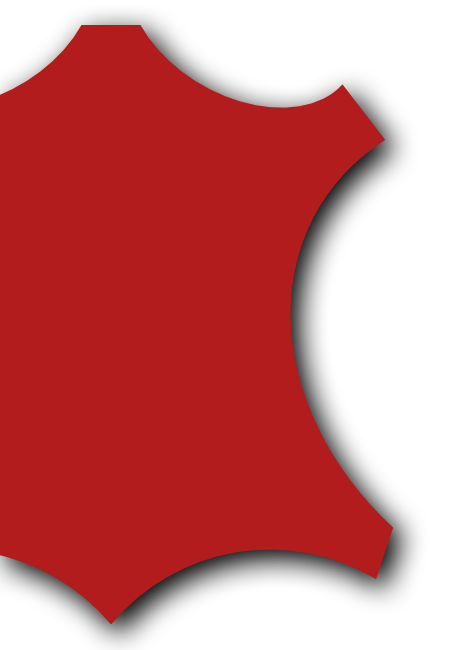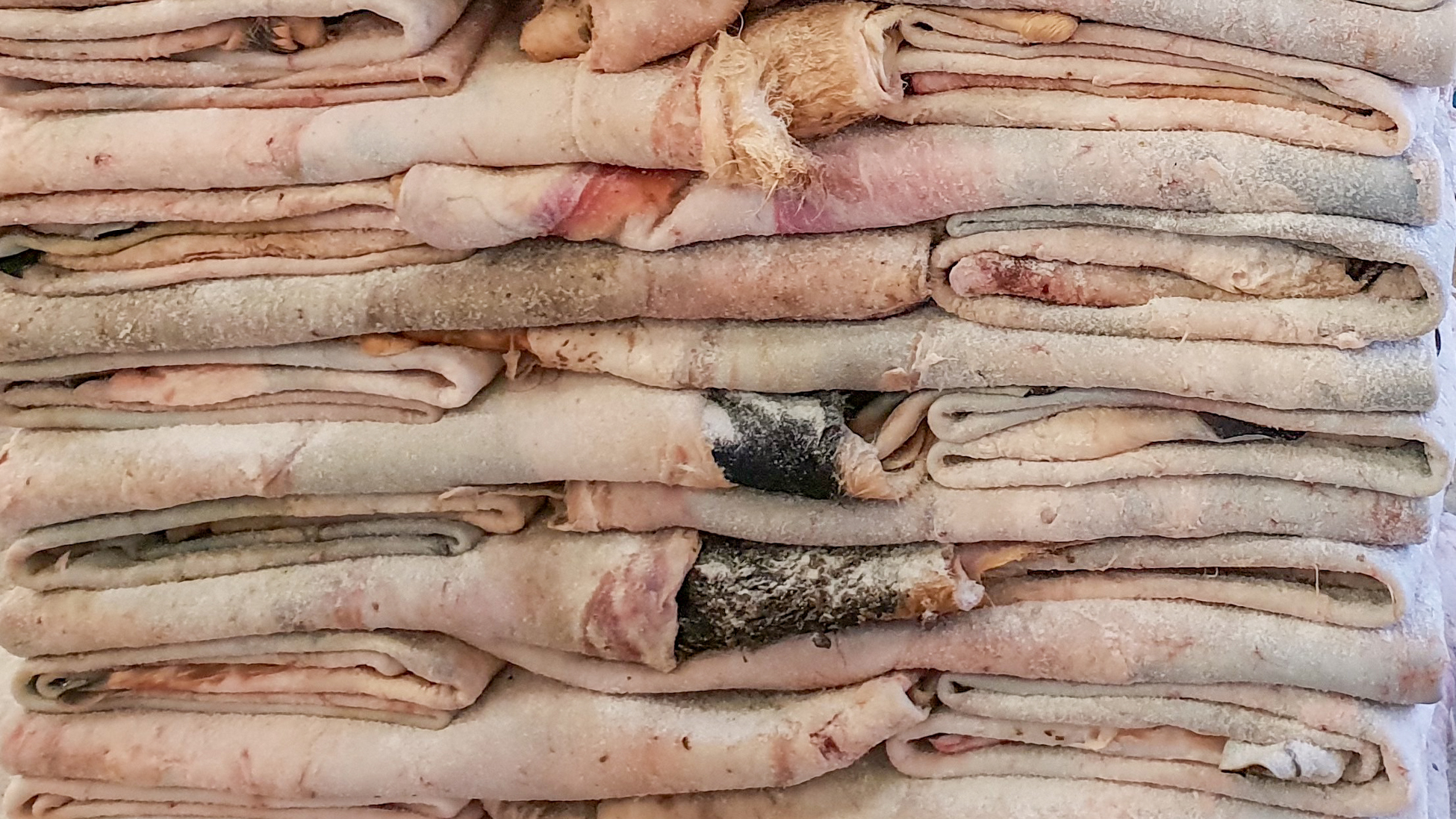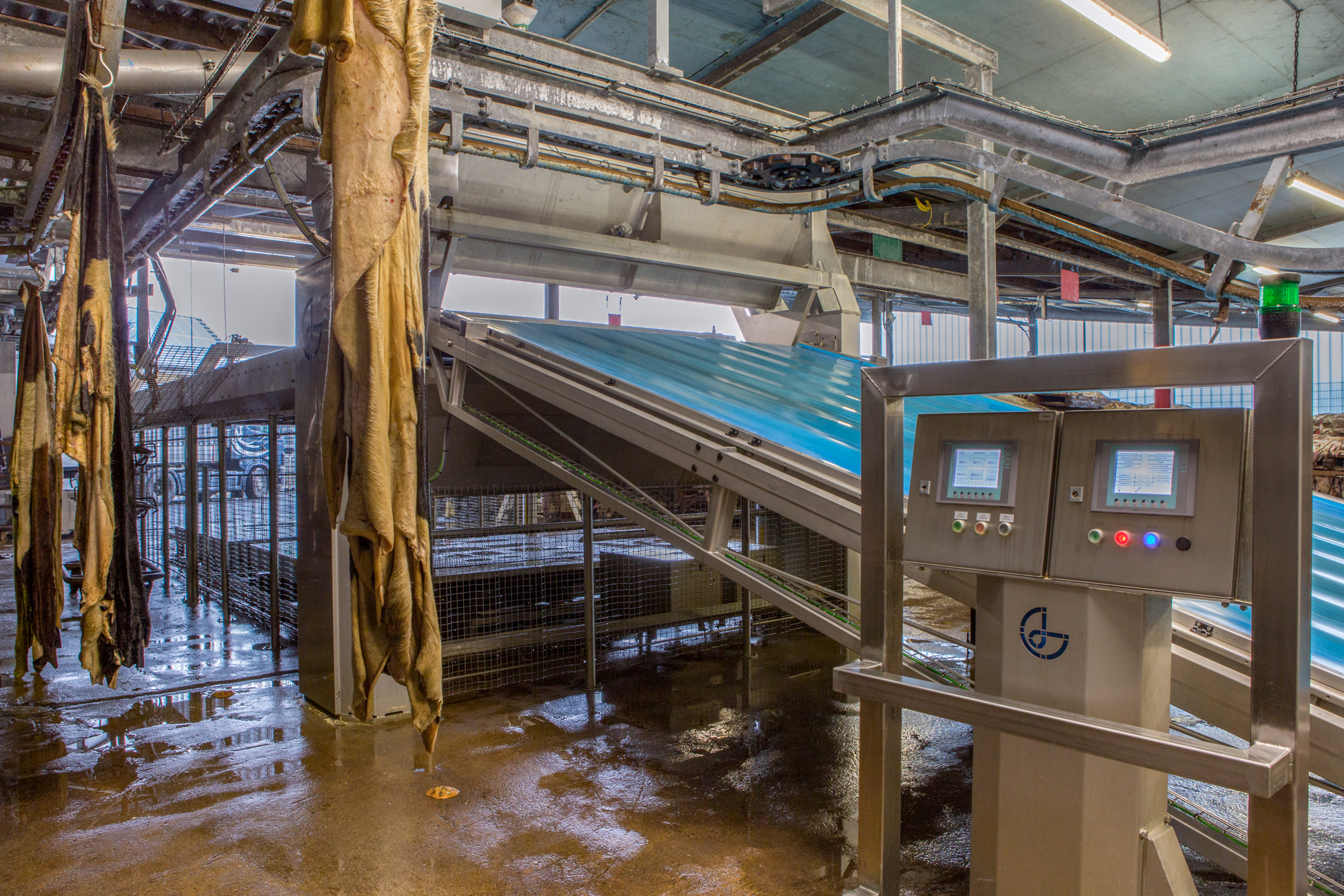 Let's build your machine
Let's build your machine
The processing process of bovine hides
The processing of cattle hides.
What is involved in the processing of cattle hides?
Just like making furniture, processing leather is a craft that has been around for ages. What is actually involved in the processing of cattle hides? It all starts, of course, with the purchase of fresh hides from slaughterhouses. The hides must then be processed in the tannery within 24 to 48 hours. A tight and logical planning is, as you understand, of great importance for maintaining the highest quality. But how is the processing of cattle hides now?


The soaking process
At the time the hides are bought, they clearly come from cattle. The hairs are still on the so-called grain side, just like fat and meat residues on the flesh side. That is why the hides must be cleaned immediately in barrels, comparable to large washing machines in which they are washed, soaked and depilated. The average duration of this is one day. After this soaking process, the hides are called 'in the naked'. After all, there is now a naked skin, without hair. With separate de-meat machines, the remaining meat and fat is completely removed from the beef hide.
Splitting the cattle hides
After cleaning, the cattle hides are still at full slaughter thickness. Moreover, the cowhides are not yet equally thick everywhere, which is necessary so that the leather can be processed nicely. That is why the beef hide is then cut horizontally once or twice with great precision. The process of cutting the cowhide, leaving two or three layers, is called splitting.
Depending on the thickness of the hide, during this processing of a cowhide the hide is split into usually two, but sometimes three different layers. The top, also the most beautiful, layer is called the 'grain split'. The hair of the cow used to sit on this layer of the skin. Given the continuous fiber structure of this layer of the skin, the grain split is the strongest. If the thickness of the cowhide allows for a three-layer split, the middle layer can be split from the bottom layer. The middle layer is called the 'core split', which is usually made of suede. The bottom layer is called the 'meat split'. The fibers are coarsest in this layer. In view of the undifferentiated fiber structure of the meat split, this layer is generally cheaper and more vulnerable. To maintain the quality of all layers of the cowhide, it is essential that the skin processing takes place carefully.
How can we help to salt your products? Call us on +31570621159 or email to info@smarthides.com.




